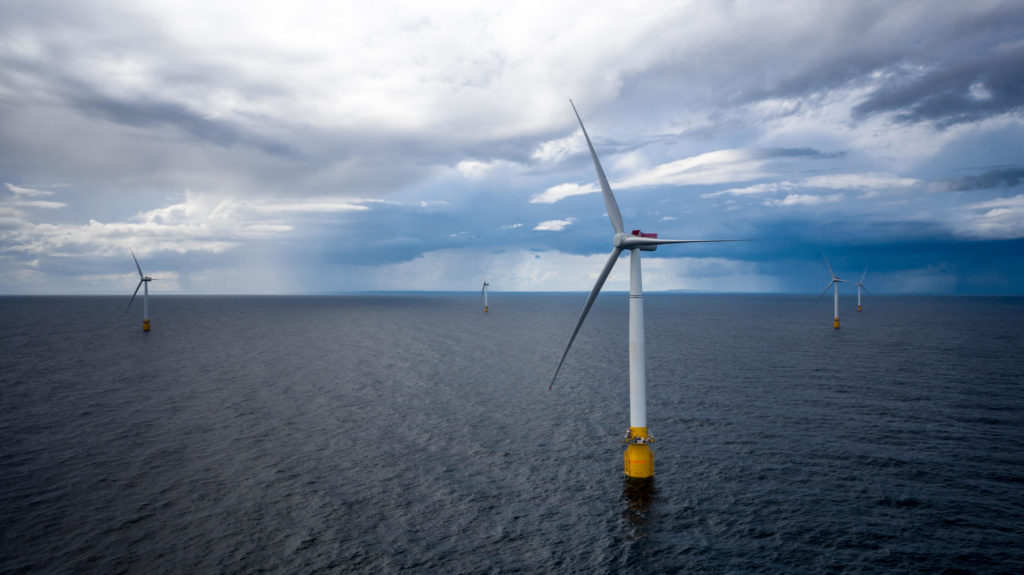Part 2 – Offshore Sector
Introduction
Net zero emissions and the energy transition has never been more critical on the global, regional, national and local agenda. Government, businesses, and importantly, society, at large and across generations are driving new actionable momentum along this theme. This five-part Thought Leadership series takes stock of recent energy sector events and our predictions on what opportunities and challenges we can expect to see across ITPEnergised’s four sectors: Offshore Renewables; Onshore Renewables & Storage; Corporate, Industrial & Manufacturing and Property this year. This series is written for developers, investment funds, utilities, network operators and owners and government. We welcome your feedback, so please reach out to us for a conversation.
Scotwind. A historic opportunity to accelerate our progress to net zero. The 25 GW announced versus 10 GW expected has caught our attention and is likely a challenging surprise to those managing the grid. The impacts of this step change in forecasted capacity will undoubtedly affect the potency of the impending 22/23 Network Options Assessment. Further to this, it will require close examination of the outputs of the Offshore Transmission Network Review to understand what solutions may be required to facilitate this unprecedented pipeline of generation.
Offshore Environmental Impact Assessments for ScotWind sites will need robust Habitat Regulation Appraisals, early planning for derogations and more holistic and national considerations for cumulative impacts to some receptor groups. Early stakeholder engagement will be instrumental to maintenance of programmes. Supply chain and resource limitations could stifle project development – from materials to people power.
There is a high proportion of floating versus fixed wind turbine foundations in successful ScotWind applications and the global focus of floating designs to push the offshore wind industry into new environments has also been worthy to note; with floating projects being able to qualify for £24m Contracts for Differences (CfD) budget allocated within the ‘emerging technologies’ pot. Floating offshore wind projects are already seeing brilliant innovations in design. Early integration of risk and hazard identification within infrastructure and offshore wind farm project design process is a must.
Celtic Sea. Reports from the Welsh Government, ORE Catapult and The Crown Estate, informed by work completed by ITPEnergised’s grid and environmental consultants, point to vital innovations in transmission infrastructure and project designs to enable access to the grid, capacity support and installation of floating wind in constrained offshore environments. Collaboration and multi-disciplinary technical support will be crucial to meeting the regional capacity expectations and to maintain local supply chain support. The consent applications for Erebus Floating Offshore Wind project were submitted in December 2021, coordinated by ITPEnergised, a historic milestone in the Celtic Sea region.
Ireland. The Irish energy minister opened consultation on the Maritime Area Consents (MAC) system for seabed leases in January, gearing up for the 5GW target capacity for offshore wind by 2030. Tackling the complex environmental and grid constraints in Ireland for offshore wind, particularly on the west coast will be an exciting challenge under this new marine planning system.
Offshore wind cable systems. Increasing scale and complexity creates a number of challenges for offshore wind farm cable systems. Steady state current ratings typically used to define cable sizing invariably leads to an over designed cable system. ITPEnergised has developed a dynamic cable rating tool that models cable thermal behaviour considering wind resource over time. This approach leads to significant downsizing of export cable systems and capital savings in the order of £10s millions.
Improving diversity in the industry. There is a fundamental need for the energy industry to act on the dramatic lack of diversity in their workforce across the board. The Offshore Wind Industry Council (OWIC) has published an updated version of its Best Practice Guide on Diversity and Inclusion which aims to help offshore wind companies measure and address ethnicity and gender balance across their workforce. Although recognition of the issue has risen in the sector, the pace of change needs to increase.
Download Part 2 – Offshore on PDF here, and look out for the next article in this Thought Leadership series coming soon.
- Part 1- Summary
- Part 2- Offshore Renewables
- Part 3- Onshore Renewables
- Part 4- Corporate, Industrial & Manufacturing
- Part 5- Property & Urban Regeneration
For more information on any of the above or a chat about how ITPEnergised can support your offshore wind projects, please contact Jay Hilton-Miller, Head of Offshore Renewables at jay.hilton-miller@itpenergised.com

